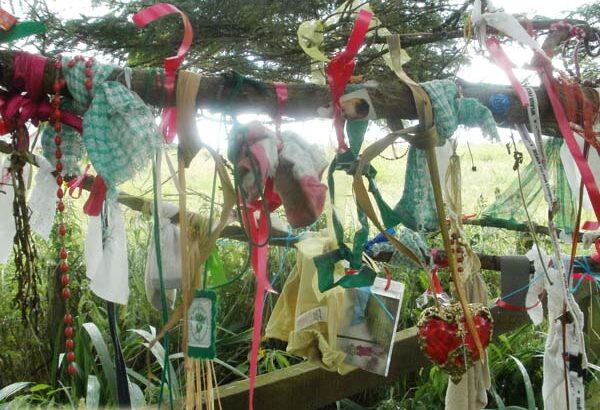Wishing Trees
“Wishing Trees” are very common throughout Ireland, England, and Scotland. They are usually individual trees upon which “folk magic”, “folk spells”, “faerie offerings”, or “prayers” are offered. Sometimes it is particular to a specific species, where the tree lives, or how it looks. Many times they are associated with faeries or a particular Deity. They are very common alongside sacred wells in Ireland and the UK. The practice usually involves petitions or offerings made to the tree, a nature spirit associated with the tree, a Saint, a God/dess, or the ancestors with a request for a wish to be fulfilled.
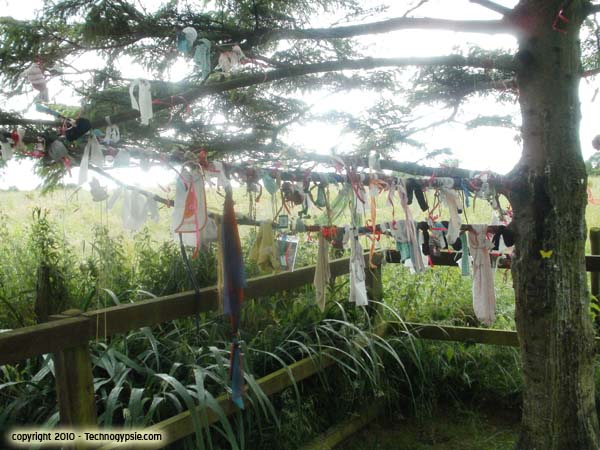
Coin trees involve the offering of coins to a particular tree. These are often hammered into an old trunk, branch, or small tree. Sometimes these are oaks, rowan trees, hawthorns, ash, or thorn trees. Some hawthorns serve for fertility magic such as a common one in Argyll, Scotland by the Ardmaddy House. Sometimes hundreds of coins are hammered into the bark and wood with the belief that a wish will be granted for each of the coins added. A similar one that is well known is the sacred well of Saint Maree in Loch Maree, Gairloch, Scotland which has hundreds of coins hammered into it. Also all over the Yorkshire Dales, such as in the pictures shown here I took during a hike, are found hundreds of coins offered to nature spirits and/or faeries for a granting of a wish.

Clootie Wish Trees (a.k.a. Cloughtie or Rag Trees) are found next to sacred wells throughout England, Scotland, and Ireland. This involves the practice of tying a piece of cloth, often called “clouties”, “clooties”, or “cloughties” to ask for an answer to a prayer, a wish, and/or a petition. As the rag decays, so will the illness; or so will the petition come true. It is a form of sympathetic magic. One of the most well-known “wishing trees” is the Madron Well in Cornwall. With the Madron well, a sacred well of healing, it is believed that as the cloth rots, the ailment that one is seeking a cure for disappears. Even Charles Darwin recorded the finding of a “wishing tree” in his travels in Argentina called “Walleechu” which was treated by the local inhabitants as a Deity. It was festooned with offerings such as cigars, food, water, and cloth hung from the branches by bright strips of colored thread. Popular wishing tree in Hong Kong is the “Lam Tsuen Wishing Tree” near the “Tin Hau Temple” in Lam Tsu where paper tied to an orange and thrown up in the trees that stick will grant the petitioner a wish. The wishing tree next to Brigid’s Well in Kildare is a common tree for petitioning healing requests.
The Wishing Tree at Tobar Ghobnatan Holy Well
not only consists of rags, but trinkets, rosaries, jewelry, prayer cards, toys, personal effects, and other items given as offerings. You can see these at Tobar Ghobnatan Wishing Trees. The concept is to leave behind something of yourself or someone that you love that is in need of prayers, healing, or petitions. The concept with the rags is that when it decays so will the illness that it represents. This is a kind of sympathetic magical rite. Unfortunately, some pilgrims to the sites don’t realize how the spell or magic works. You can see this when they tie a piece of a plastic bag on the tree. Plastic will take forever to decay, so will the illness it is to represent. If only they knew! In addition to the rags, others leave coins, jewelry, rings, prayer cards, figurines, toys, personal effects, clothing items such as belts, shoes, garments, and trinkets. The cloutie and Wish trees found at Tobar Ghobnatan are considered to be dedicated to the Matron Saint of Ballyvourney and sacred Bee-Keeping mistress, Saint Ghobnatan holy pilgrimage site and monastic settlement known as “Tobar Ghobnatan”. This is the legendary home of St. Gobnait/Ghobnatan. It is located a kilometer south of the village of Ballyvourney where her church Móin Mór (a.k.a. Bairnech) was built.
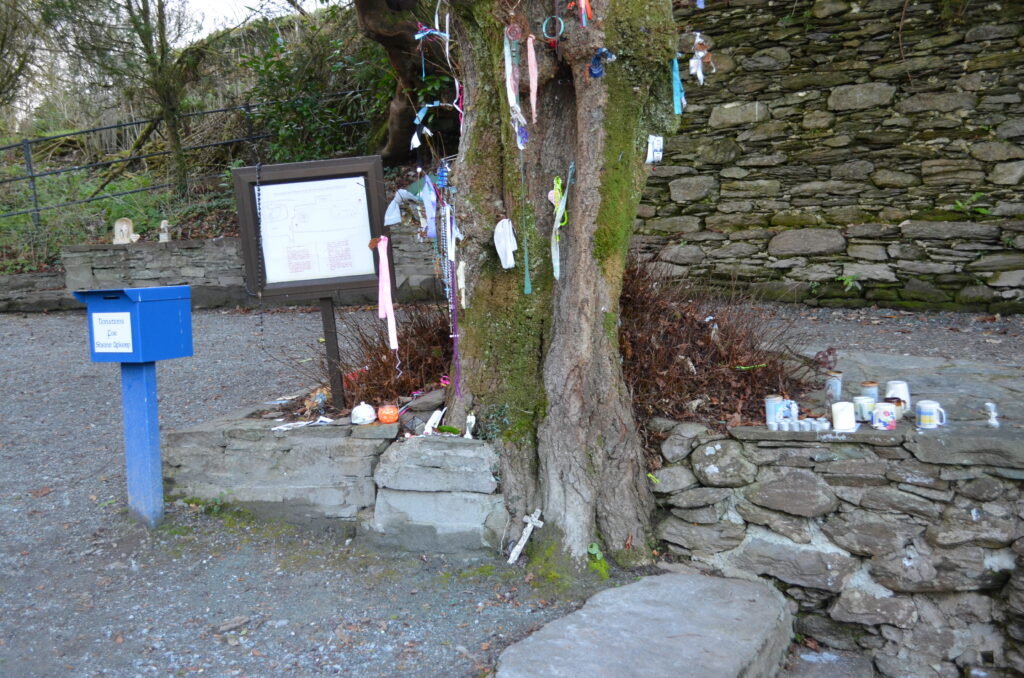
A great pictorial of Wishing Trees around the U.K. can be found here: http://www.viralnova.com/money-trees/
Photos of “Wishing Trees” along my journeys:
Madron Well and its Wishing Tree
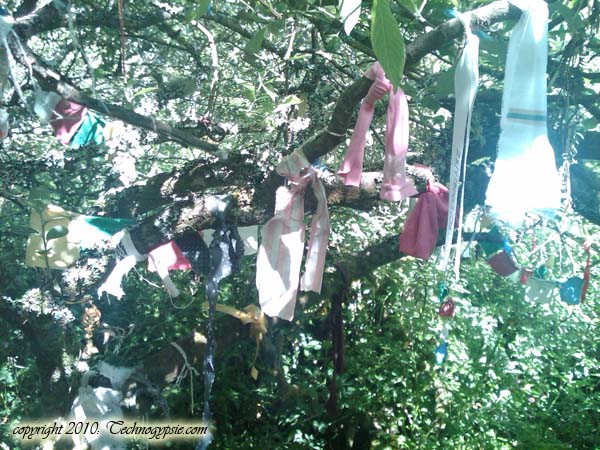
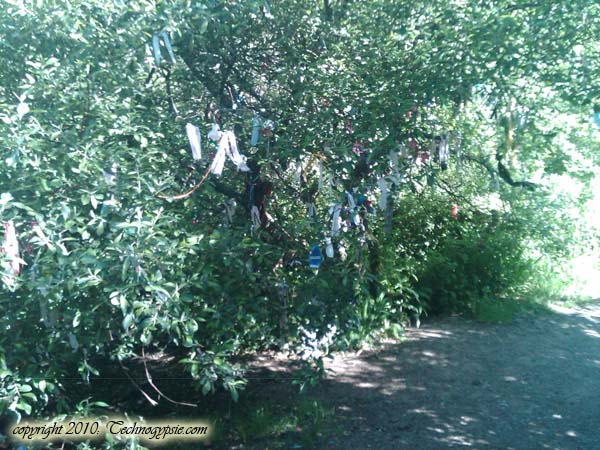
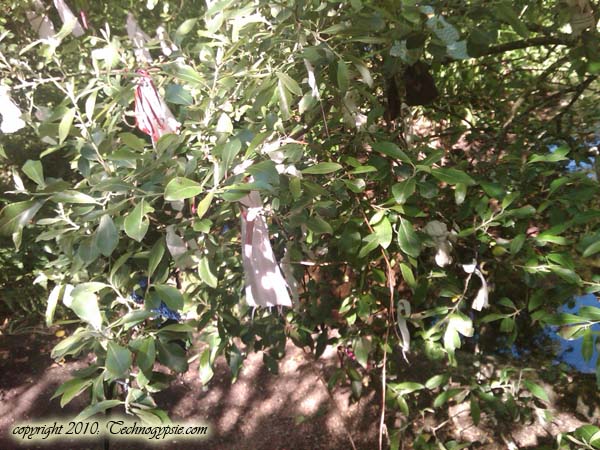
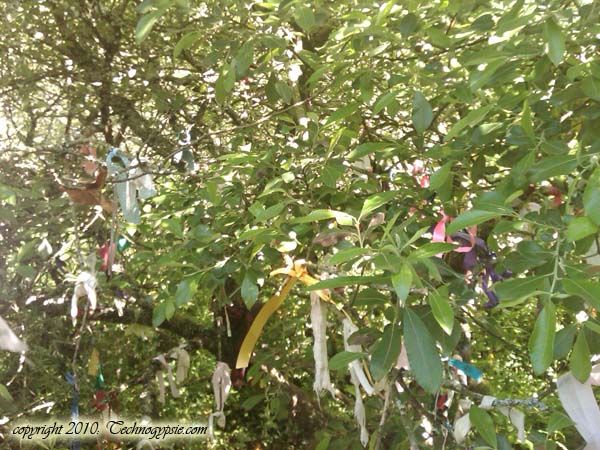
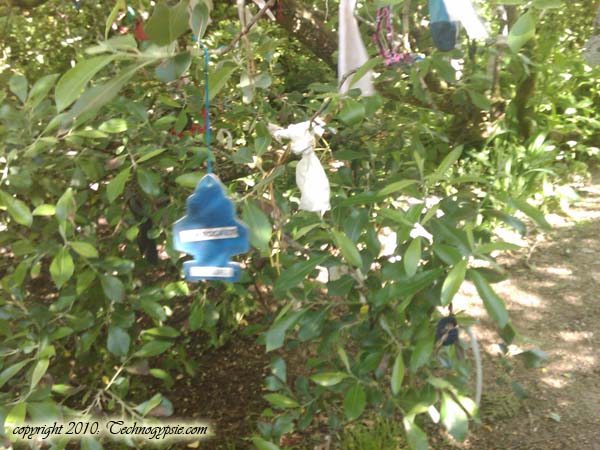
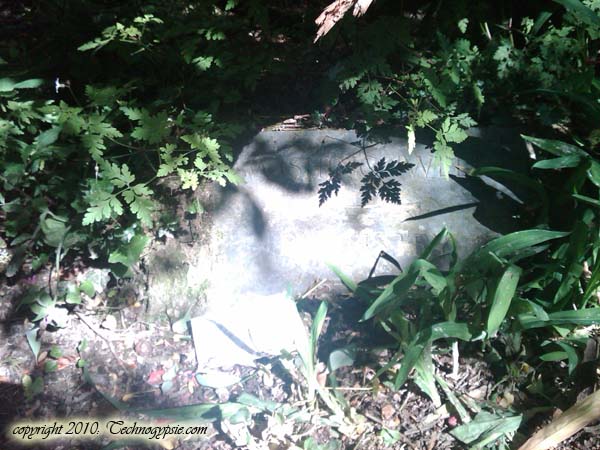
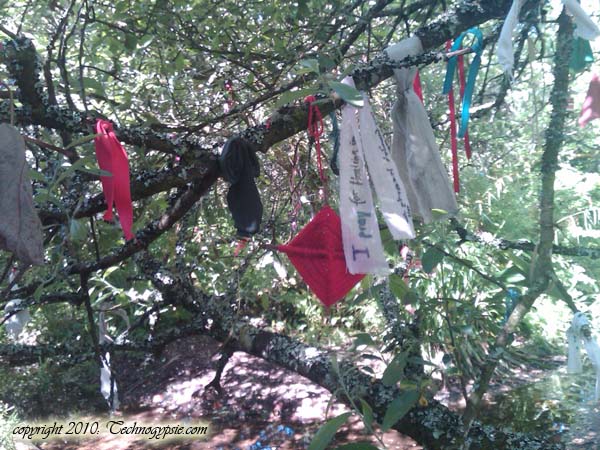
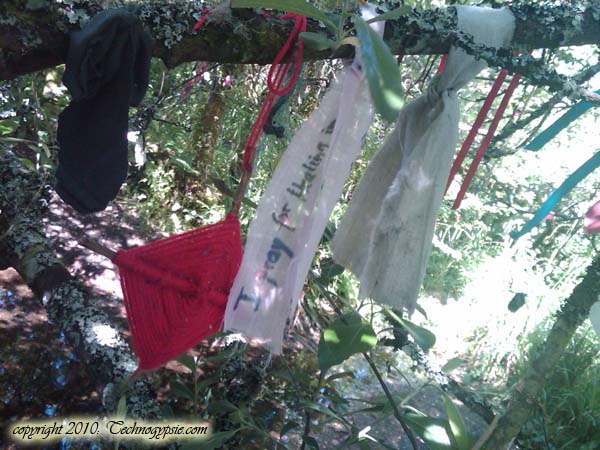
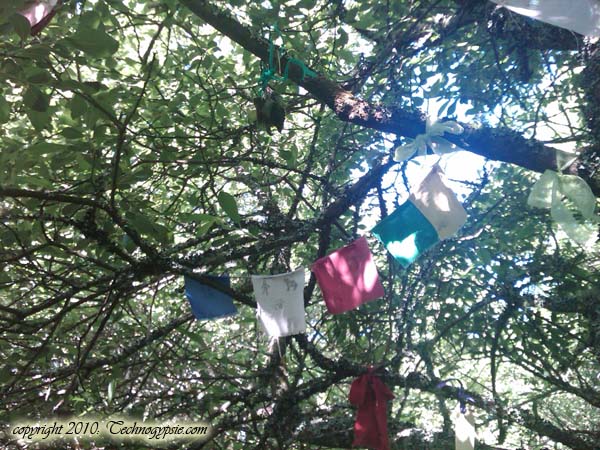
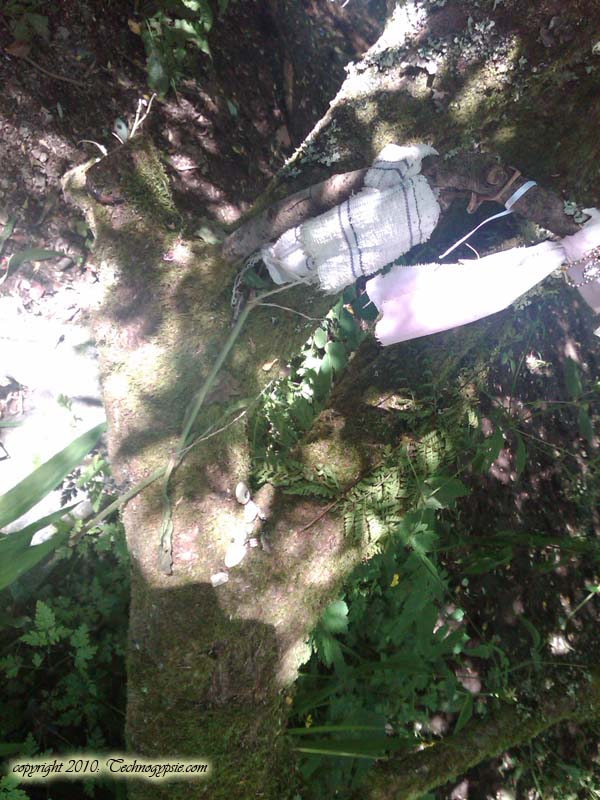
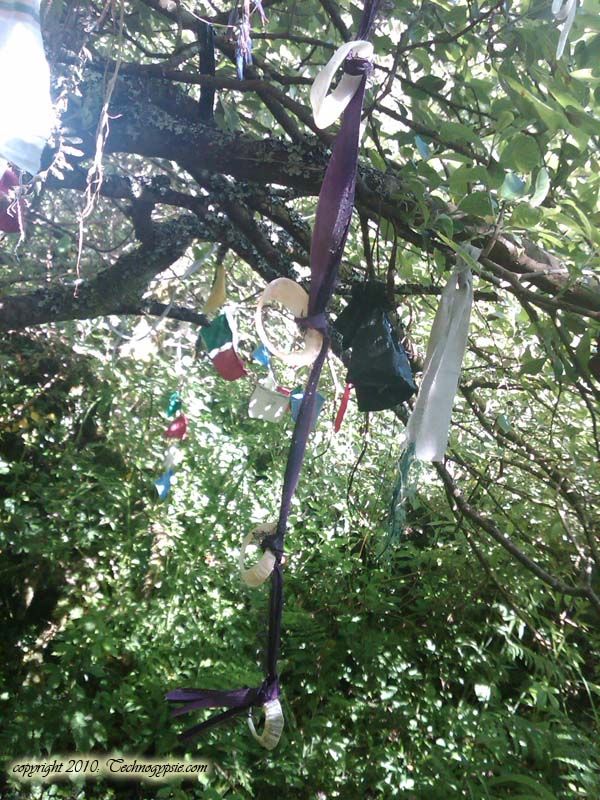
On an excavation I participated in at Saveok Mill in Cornwall, England, there was a “purification pool” or sacred well or spring that was filled in after Cromwell’s reign of terror across the countryside. Excavated in the pool were lots of pieces of cloth, well preserved by the water. It is a theory of mine that these could be “clooties” offered to a tree by the side of this pool. What do you think? Purification Pool at Saveok
Cloth found in the Purification Pool:
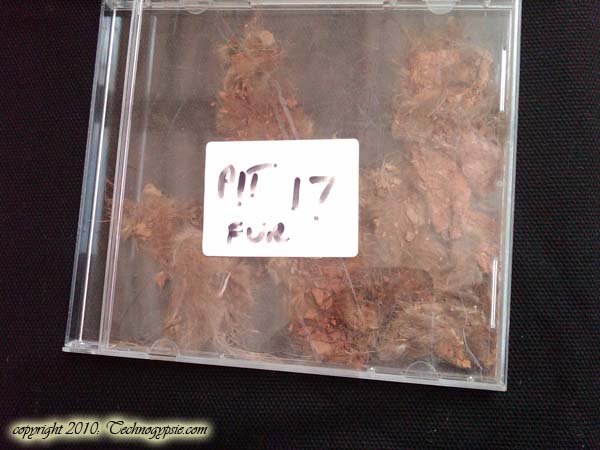
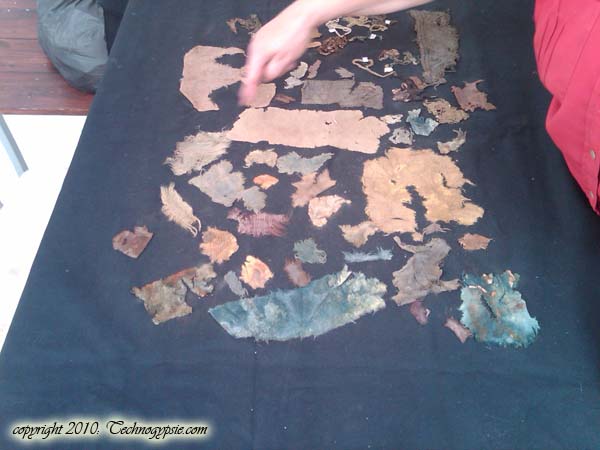
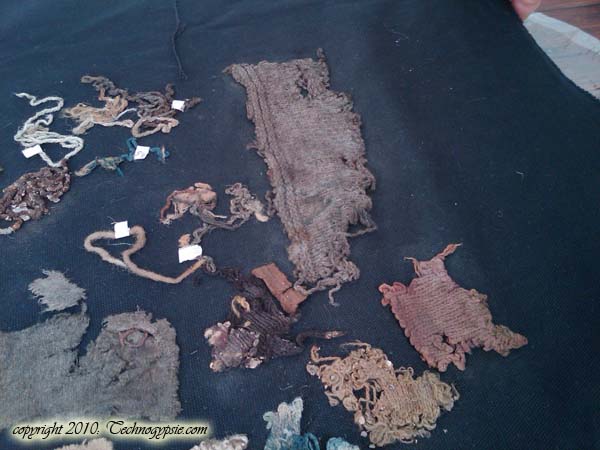
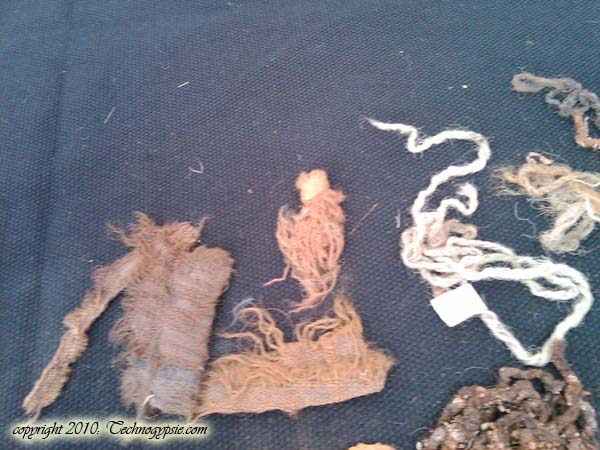
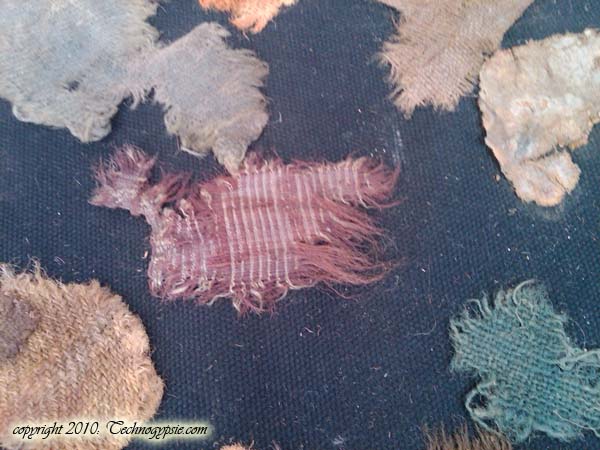
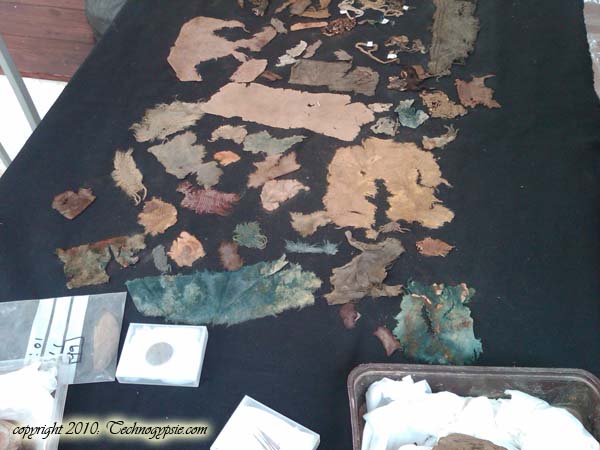
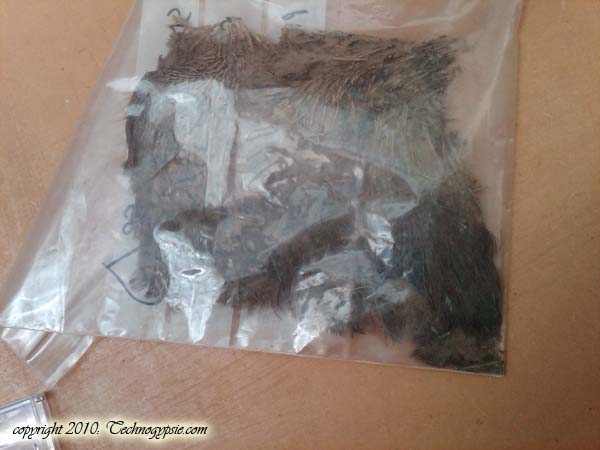
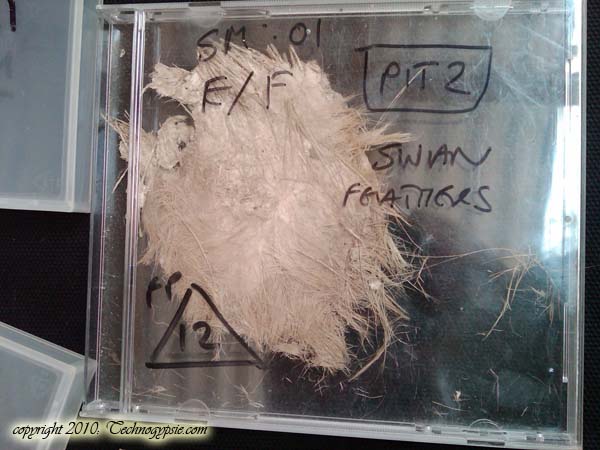
Faerie Trees are also offered with tokens, gifts, or prayers to Faeries asking for a petition or an answer to a prayer.
Money Trees at Janet’s Foss (Malham, England) On my trip to England, hiking across the Yorkshire Dales, I came across these “money trees” or “Wish Trees”. Some believe and have told me it’s a common practice similar to throwing coins in wells – for wishes. Others state it is for safe passage. Romans would always offer a coin to the Gods before crossing water. Others as tithing or offering to the tree spirits as an apology for human intrusion and destruction of the woods or impeding on a fairy path. Coins are sometimes used, hammered deep into the tree trunk, however, the practice of tying pieces of cloth to the tree may also qualify, although this is more often directly associated with nearby Clootie wells as they are known in Scotland and Ireland or Cloutie or Cloughtie in Cornwall. It is likely that an offering is also being made to the tree spirit as elsewhere the ritual is to place objects into the water, so here they are ‘hedging their bets’ and effectively making an offering to both. Others state for a sacred spring or foss. Trees have long been associated with wells and waterfalls. An old sycamore is the ‘money tree’ at the holy well of St Fintan near Portlaoise, Ireland. Tradition states that St Fintan dropped some water on the tree and the damp hollow in the trunk bears a trickle of holy water. Pilgrims used to tie clothing to the tree, but more recently hammered coins into the bark, so that its base is now more metal than wood. There are several myths/beliefs involving that the money is offerings to the faeries for protection, blessings, wishes, or safe passage. Here’s a belief posted on a blog stating “…We even saw a money tree on the way home – it was absolutely covered from head to toe with coppers and 20 and 10 and 5ps. And they could be taken at your leisure. But now – legend has it that the pixies long ago took money off travelers who would be given invisibility to protect them against the giant serpent that lurked in the waters. That’s right – genuine 2002 coins way back in the early centuries. By gum, they kept up with the times in those days. Anyway – if anyone picked a coin from the tree it would anger the pixies and you would be in danger of their wrath …”
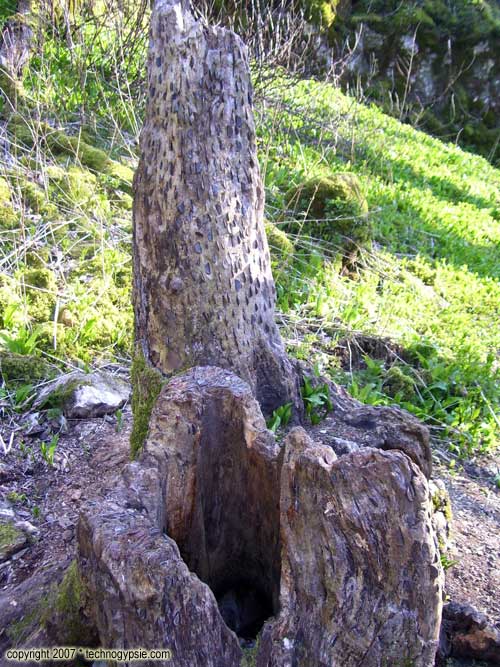
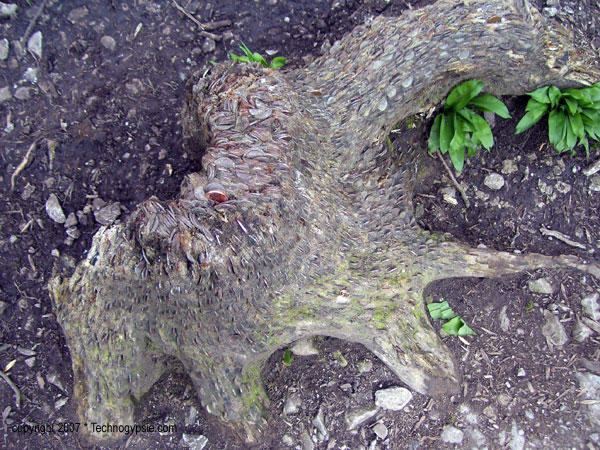


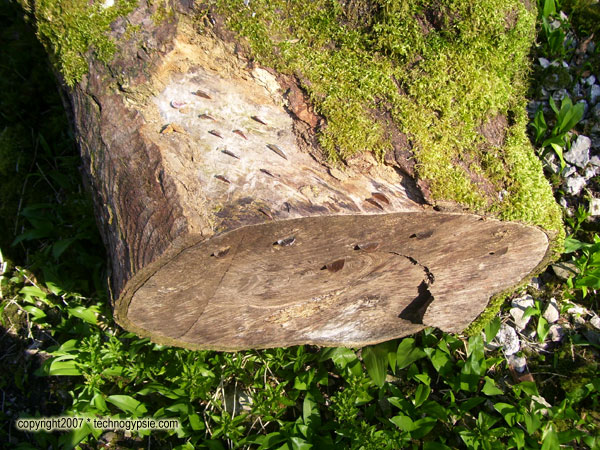
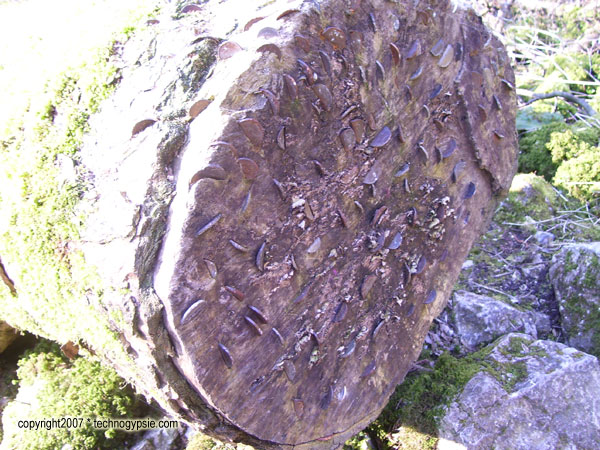
Brigid’s Well, Kildare, Ireland
Discover more from The Naiads Well
Subscribe to get the latest posts sent to your email.
